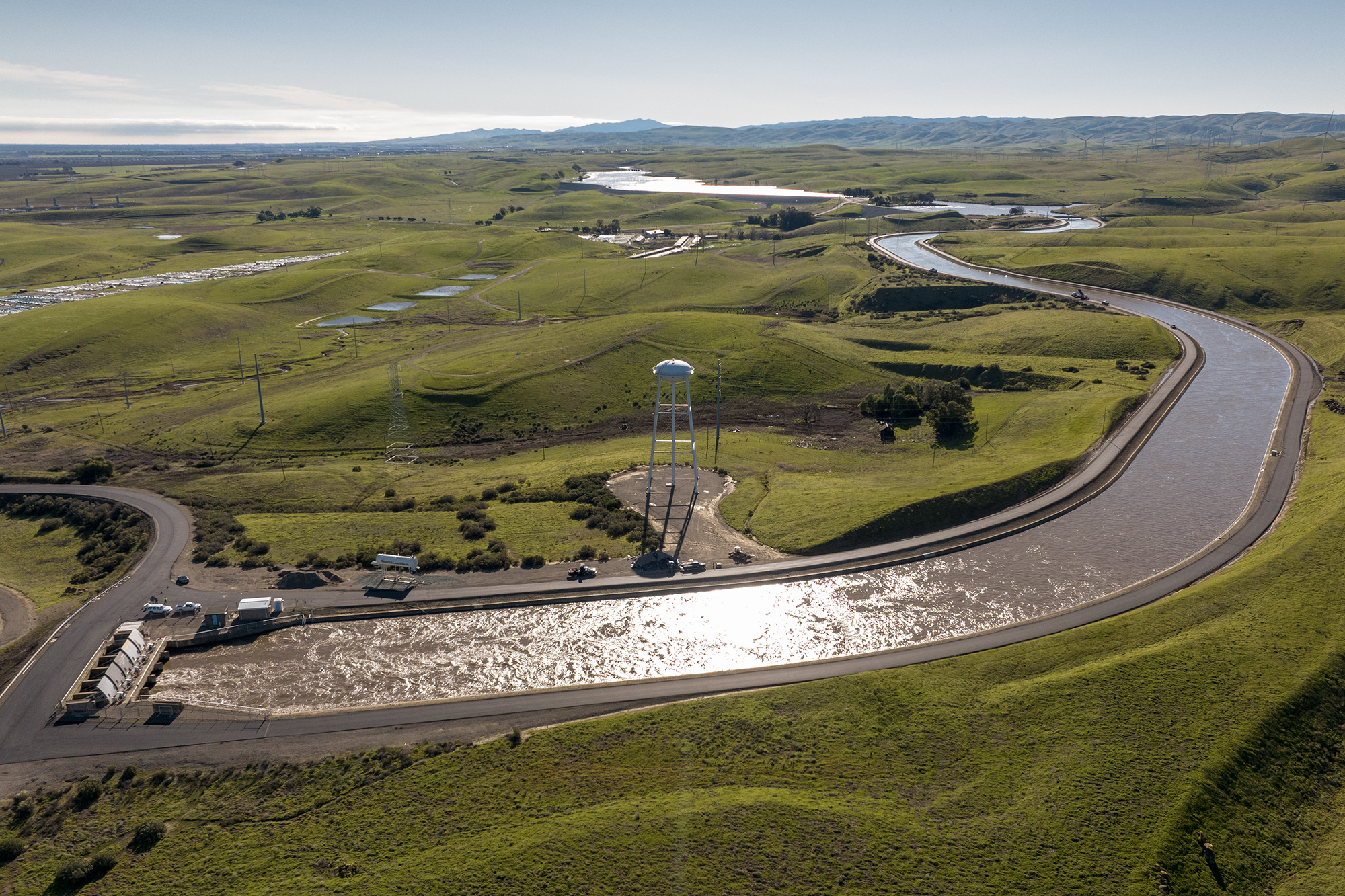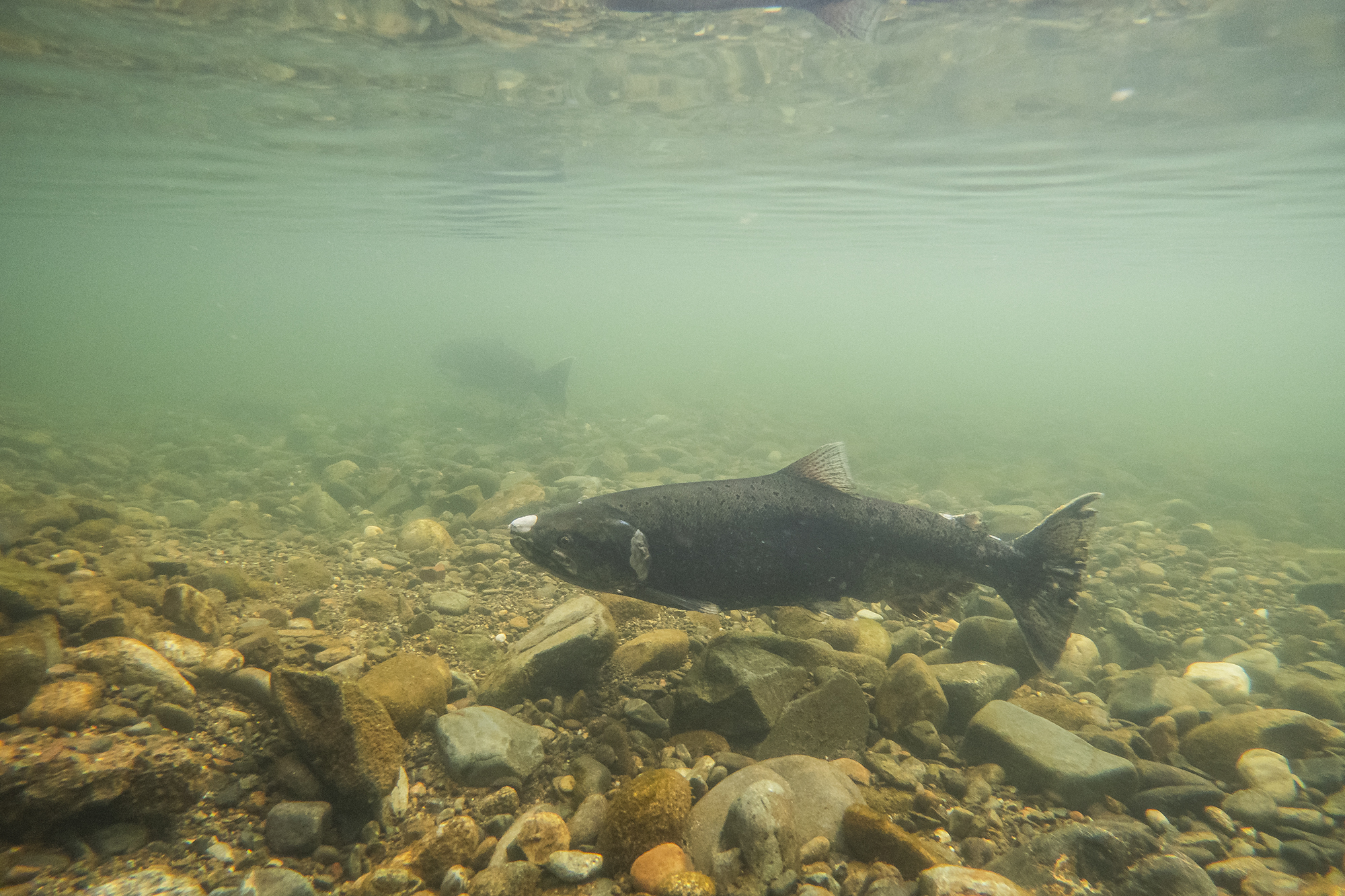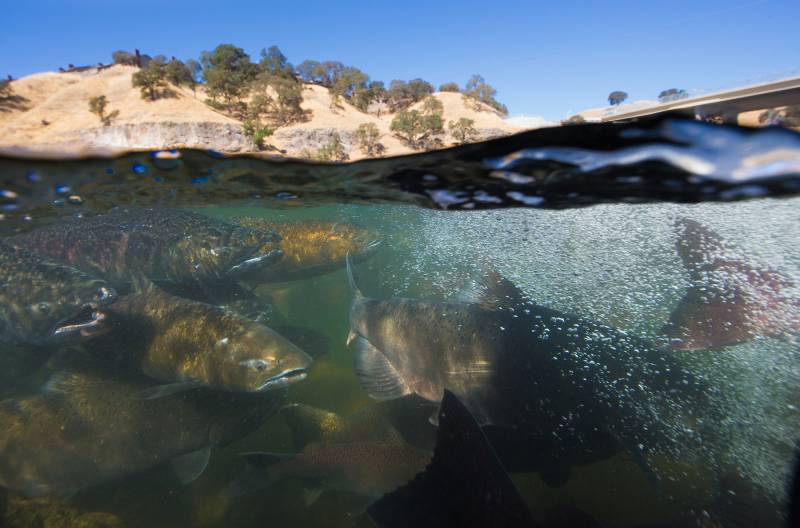The Newsom administration is refining a contentious set of proposed rules, years in the making, that would reshape how farms and cities draw water from the Central Valley’s Delta and its rivers. Backed by more than $1 billion in state funds, the rules, if adopted, would require water users to help restore rivers and rebuild depleted Chinook salmon runs.
The administration touts its proposed rules as the starting point of a long-term effort to double Central Valley Chinook populations from historical levels, reaching numbers not seen in at least 75 years. But environmental groups have almost unanimously rejected it, saying it promises environmental gains that will never materialize and jeopardizes the existence of California’s iconic salmon and other fish.
“There is no way the assets they’ve put on the table, water and habitat combined, are going to achieve the doubling goal — no way, not possible,” said Jon Rosenfield, science director with San Francisco Baykeeper.
Dubbed Healthy Rivers and Landscapes but better known as “the voluntary agreements,” the proposal is one of two pathways for state officials as they update a keystone regulatory document called the Bay-Delta Water Quality Control Plan, which was last overhauled in 1995.
With the ecosystem of the Bay-Delta in the throes of collapse, the set of rules is critical to determining how much water flows through the Delta for salmon and other species and how much is available for growers and cities in the Central Valley and Southern California.
Once vital to indigenous cultures and the coastal ecosystem, Chinook salmon and other native fish have declined for decades due to dam operations, water diversions, increased water temperatures and marine food web issues. Numbers of spawning adult Chinook have dropped so low that all commercial and recreational salmon fishing has been banned for two years in a row, and preliminary numbers this year show no signs of recovery.
State officials from multiple agencies have lauded the Healthy Rivers program — which would meter out flows for fish while mandating restoration of floodplains and other river features — as their preferred option for updating the plan.
California’s most influential water districts, serving tens of millions of people and most of the Central Valley’s farmland, have rallied behind the state’s preferred option, which has taken center stage during public workshops since November.
Newsom administration officials have worked on these rules for years during negotiations with the San Joaquin Valley’s Westlands Water District, the nation’s largest agricultural water provider, the giant Metropolitan Water District of Southern California and other water users.
California Resources Secretary Wade Crowfoot described the proposal as “a new and strengthened approach” that will protect both the environment and the water supply.
Crowfoot told the water board that the proposed rules would do “a good job working to balance all of (Californians’) needs, and ultimately help the environment to recover in ways that’s workable for communities across our state.”
Such a balance has long eluded state officials.
“This is progress,” Chuck Bonham, director of the California Department of Fish and Wildlife, said at a November water board workshop. “It’s gone on so long. It’s time.”
Back in 2020, Gov. Gavin Newsom endorsed the “voluntary agreement” approach. “Today, I am committing to achieving a doubling of California’s salmon population by 2050. These agreements will be foundational to meeting that goal,” he wrote in a CalMatters opinion piece.
Nina Hawk, the Bay-Delta Initiatives group manager with the Metropolitan Water District — which provides water that serves 19 million Southern Californians — said the Newsom proposal would create an equitable pathway to meeting human and environmental water demands.
“It is important that we try to balance what the state board defines as beneficial uses … both for the environment and for farms, in a way that looks at the integrity of the water system and also for the state of California’s natural resources and its economy,” Hawk said.
Kevin Padway of the Zone 7 Water Agency, which serves 270,000 East Bay residents, encouraged the water board to adopt the rules, commending them as an “immediately implementable” route to balancing water demands for people and environmental uses.

But environmentalists aren’t sold. Some have even refused to call it by its formal name, saying it’s a euphemism with no bearing on “healthy rivers.” They say the rules would favor water users, allowing cities and farms to draw so much water from the Delta and its tributary rivers that salmon will continue their long decline. They say the proposed rules simply don’t offer fish the water they need, let alone support the state’s salmon rebuilding mandate.
“If you’re diverting more than half of a river’s flow, you are guaranteeing negative population growth” of salmon, said Gary Bobker, Friends of the River’s program director.
The complex flow rules could even allow growers to entirely drain some rivers in critically dry years, according to Barry Nelson, a water policy analyst with the Golden State Salmon Association who spoke at a recent board workshop.
“Dewatering rivers during droughts would be completely consistent with the Bay-Delta Plan,” he said.
The State Water Resources Control Board is the agency with the authority to approve the rules. A public hearing and vote could come in 2025.
The water board’s other option would require strict minimum flows in rivers. Water users say those rules would have unacceptable impacts on farms, hydropower and communities — including planned housing projects — while environmentalists and tribes laud it as more protective of fish. It would ensure that rivers contain an average of 55% of the total water available in the watershed at a given time — a measure called unimpaired flow.
While momentum has built behind the state’s Healthy Rivers plan, the state water board could still go either way with their vote. It is even possible that officials adopt both options, with the unimpaired flow pathway reserved as a regulatory backstop, should the Newsom proposal fail, or as concurrent rules applied to waters users who opt out of the voluntary agreements.
Doubling Chinook runs — is it a stream dream?
A longstanding mandate requires fishery and water managers to double the Central Valley’s population of naturally reproducing Chinook salmon from levels observed between 1967 and 1991. This would translate into an average of 990,000 spawning Chinook each year, almost 10 times recent averages.
State officials say their Healthy Rivers plan would help to realize this goal. Around year-eight — when the program could be extended — officials hope to be about 25% of the way to the doubling goal, said Louise Conrad, lead scientist with the state Department of Water Resources.
Officials with the National Marine Fisheries Service, in a January letter to the state, said the eight-year timeframe “is concerning, given the dire status of native fish species within the Sacramento River Basin and Delta.”
The U.S. Environmental Protection Agency, in comments emailed to the Water Board in January, noted the light water allowances in critically dry years.
“EPA is concerned that the total volume and timing of Delta inflow and outflow provided under the proposed VA (voluntary agreement) alternative relative to baseline is not large enough to adequately restore and protect aquatic ecosystems,” the agency wrote.

This target of doubling Chinook is nothing new. The almost legendary “doubling goal” has been on the books since the early 1990s, when federal law set the deadline for 2002 (PDF).
Now the state’s proposed rules would punt it to 2050 — what salmon advocates say is much too far away for a species already on the brink and a vanishing fishing industry.
“Salmon runs could potentially be extinct by then with the flow assets they’re putting forward,” said Ashley Overhouse, Defenders of Wildlife’s water policy advisor.
Representatives of California tribes, who historically relied on Chinook as a dietary mainstay, say they were excluded from planning discussions.
“The only people that have been at the table talking about the voluntary agreements are water agencies, water contractors, irrigation districts, and private companies,” said Gary Mulcahy, government liaison for the Winnemem Wintu Tribe. “They (state officials) have excluded tribes, disadvantaged communities, environmental justice communities for nine years.”
But the flow rules environmentalists and tribes prefer would cut deep into urban and agricultural water supplies, causing “impacts far and wide” on water exports from the Delta, storage in upstream reservoirs and hydropower production, said Jennifer Pierre, general manager of the State Water Contractors, which represents 27 water agencies that serve 750,000 acres of farmland and 27 million people.
Farmers, she said, would experience substantial permanent economic losses, forcing widespread fallowing of their crops. San Joaquin Valley growers would lose more than a quarter of their water in dry years, and 13% on average for all years, according to the draft rules (PDF).
Thaddeus Bettner, executive director of the Sacramento River Settlement Contractors — a group of farmers who largely grow rice — said it would force as much as 30% of his district’s 450,000 irrigated acres out of production, with harder impacts on growers with little groundwater to fall back on.
Rice farmer Jon Munger, with 13,000 acres on the east side of the Sacramento Valley, said, in some years, the unimpaired flow approach favored by environmentalists could strip him of virtually all of his water in summer months. His groundwater supply is very limited.
“We wouldn’t have any water to grow rice,” he said.
That option would also squeeze residential water use. The Placer County Water Agency, which serves about a quarter-million residents northeast of Sacramento, would lose almost half its supply, threatening initiatives to accommodate a growing population, said General Manager Andrew Fecko.
It would cost Southern California a big chunk of its municipal water, too.
“We wouldn’t have sufficient water supply,” said Hawk at the Metropolitan Water District. “It would be a decline at the taps, it would be a decline for businesses.”
Billions of dollars in new salmon habitat
The program proposes restoring 45,000 acres of structural habitat, like floodplains, tidal marshes, in-river piles of woody debris and gravel spawning beds over the next eight years.
Thousands of acres are already completed or underway. This, according to Overhouse at Defenders of Wildlife, leaves roughly 30,000 planned acres that would be brand new additions to the ecosystem — which she and others say would mute the promised benefits of the program.
All of this will cost money, and to date $2.4 billion in public funds (PDF) have been secured to support the flow measures and the habitat restoration. Another $500 million may be needed.
The state’s proposed rules would allocate to the Sacramento River system between 100,000 and 700,000 acre-feet of water per year, depending on how much precipitation has fallen. But environmentalists say this isn’t nearly enough. They also worry that regulatory loopholes would allow future water projects — such as the Sites Reservoir, for which Newsom advocated at a public appearance last week — to divert water that would be protected if the state adopted unimpaired flow rules.
“It is not an accident that they haven’t solved this problem,” Nelson, with the Salmon Association, said. “The VAs (voluntary agreements) and the Delta tunnel and Sites are a package.”
Some conservationists are optimistic about the state’s proposal.
Rene Henery, California science director with Trout Unlimited, thinks more habitat and water — especially in dry years — will be needed to protect salmon. But he also thinks the rules could succeed, as long as it’s just the first step of many in a flexible and collaborative restoration process — something he and a team of colleagues are trying to initiate with a state-funded project called Reorienting to Recovery.
UC Davis fish biologist Carson Jeffres, who has studied floodplain restoration projects, also said the salmon doubling objective is achievable through the Newsom proposal as long as state officials “have the courage to be nimble and adjust and adapt if it looks like things aren’t going as planned.”
Tribal water rights advocate Regina Chichizola, executive director of Save California Salmon, rejected the Newsom administration’s notion that the state balances competing needs and demands.

